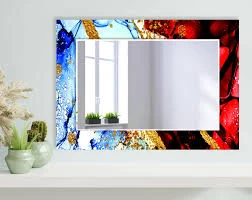

Understanding Annealed Float Glass Properties, Applications, and Benefits
Annealed float glass is a widely used material in the construction and manufacturing industries, known for its clarity, smooth surface, and versatility. This type of glass is produced through a process known as floating, where molten glass is poured onto a bed of molten tin. The result is a flat, uniform sheet of glass that is cooled gradually in a controlled environment, which allows internal stresses to relax, thus producing what is referred to as annealed glass.
Properties of Annealed Float Glass
The primary characteristic of annealed float glass is its high level of optical clarity. This makes it an ideal choice for applications where visibility is essential, such as windows and display cases. The annealing process ensures that the glass is free of internal stresses, allowing it to be cut and fabricated with relative ease. Furthermore, annealed float glass exhibits excellent light transmission properties, allowing natural light to brighten spaces without distortion.
Another important aspect of annealed float glass is its chemical stability. It does not react with most substances, making it resistant to corrosion. Its thickness can vary, with options ranging from a few millimeters to several centimeters, enabling various applications depending on the required strength and insulation values.
Applications of Annealed Float Glass
Annealed float glass is employed in a multitude of applications across various sectors. One of its most common uses is in the construction industry, where it serves as a primary material for windows and facades. The aesthetic appeal and functional properties of this glass make it a preferred choice for architects and builders. Additionally, its ability to be laminated or tempered enhances its safety and performance for exterior applications.

In the automotive industry, annealed float glass is utilized for windshields and side windows
. Although tempered glass is often used for safety reasons, annealed glass can serve as a cost-effective alternative in areas not exposed to significant impact.Furthermore, in the realm of interior design, annealed float glass is favored for furniture, mirrors, and glass partitions. The seamless appearance and smooth finish make it a popular choice for modern interiors, enhancing the overall look and feel of spaces.
Advantages of Annealed Float Glass
One of the significant advantages of annealed float glass is its cost-effectiveness. Compared to other types of glass with additional treatment processes—such as tempered or laminated glass—annealed glass is generally less expensive due to simpler production methods. This makes it an attractive option for budget-conscious projects while still offering many desirable properties.
Moreover, annealed float glass is environmentally friendly as it is fully recyclable. End-of-life glass can be culled, cleaned, and reprocessed into new glass products, contributing to sustainability in the construction and manufacturing industries. The energy consumed during the production of float glass is relatively low compared to other glass types, making it a greener option.
Conclusion
In conclusion, annealed float glass is a versatile and cost-effective material that plays a crucial role in various industries, from construction and automotive to interior design. Its remarkable optical clarity, chemical stability, and ease of fabrication make it a favorite among professionals. As the demand for sustainable building materials continues to rise, the recyclability and lower energy consumption associated with annealed float glass position it as a forward-thinking choice in modern applications. Whether utilized in residential settings or large commercial projects, annealed float glass offers numerous advantages that align with contemporary design needs and environmental considerations.